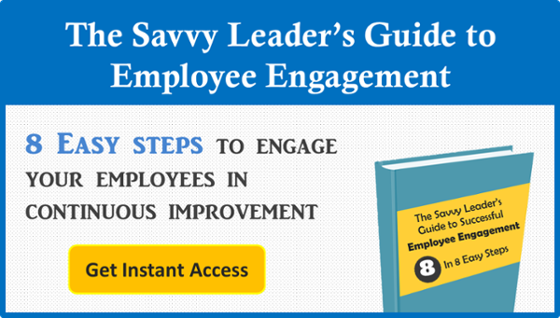 If our recent conversations with executive teams and managers are any indication, Kaizen events are getting something of a bad rap. It seems that there are some mistaken beliefs floating around that are causing organizations to miss out on the potential benefits of the rapid improvement approach.
If our recent conversations with executive teams and managers are any indication, Kaizen events are getting something of a bad rap. It seems that there are some mistaken beliefs floating around that are causing organizations to miss out on the potential benefits of the rapid improvement approach.
We’d like to take a minute to set the record straight.
False Impression: Kaizen events are a replacement for daily Kaizen
You don’t have to choose between daily continuous improvement and Kaizen events. Many organizations have successful Kaizen events within a culture that values frequent incremental improvement. The trick is to deploy Kaizen events under the right circumstances and to address the right kinds of problems.
False Impression: If an event fails, the technique won’t work for your organization
We’ve run into a few people who have given up on Kaizen events after a bad experience. “We tried it once and it was terrible,” they say. Kaizen events are like any other skill. They require training and practice to be effective. Leaders should not give up so easily and should seek expert guidance if needed.
False Impression: It’s OK to wing it
If you are willing to devote the full-time efforts of several team members to solving a significant problem, you need to have a solid plan before the work begins. The scope of the issue should be clearly defined, a vision of success outlined, and a general plan for the event developed.
False Impression: A Kaizen event can fix every problem
Kaizen events are intense, but short. They typically last just 2 – 5 days. Many problems can be solved in this time frame with the right focus, but many others cannot. A clear understanding of the scope of the issue is essential for determining when a rapid improvement event might be in order.
False Impression: Kaizen events are run by committee
Yes, Kaizen events are meant to be collaborative, often involving people from many different functional areas of the organization. But they still must have a designated facilitator to manage the effort, make assignments, and ensure forward progress. This could be an experienced member of the team or a trained professional.
False Impression: The work ends when the event ends
In order to achieve long-term gains from your event, follow through is necessary. Successful teams document the event, its results and any lessons learned; update Standard Work documentation if needed; define intervals for status measurement and reporting (30 days, 60 days, 90 days, etc.); evaluate the Kaizen event process and experience to determine if it could be improved; and recognize the achievements of everyone who contributed.
Kaizen events are an important tool in the improvement toolbox and we hate to see organizations waste the opportunity to practice and gain from the technique. With these false impressions put to bed, we hope you are willing to give it a try.



Add a Comment